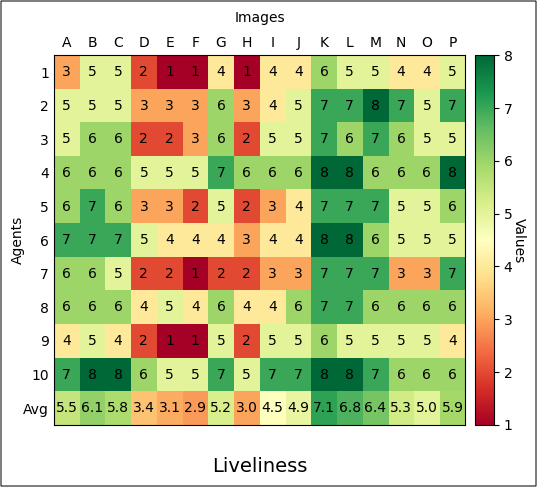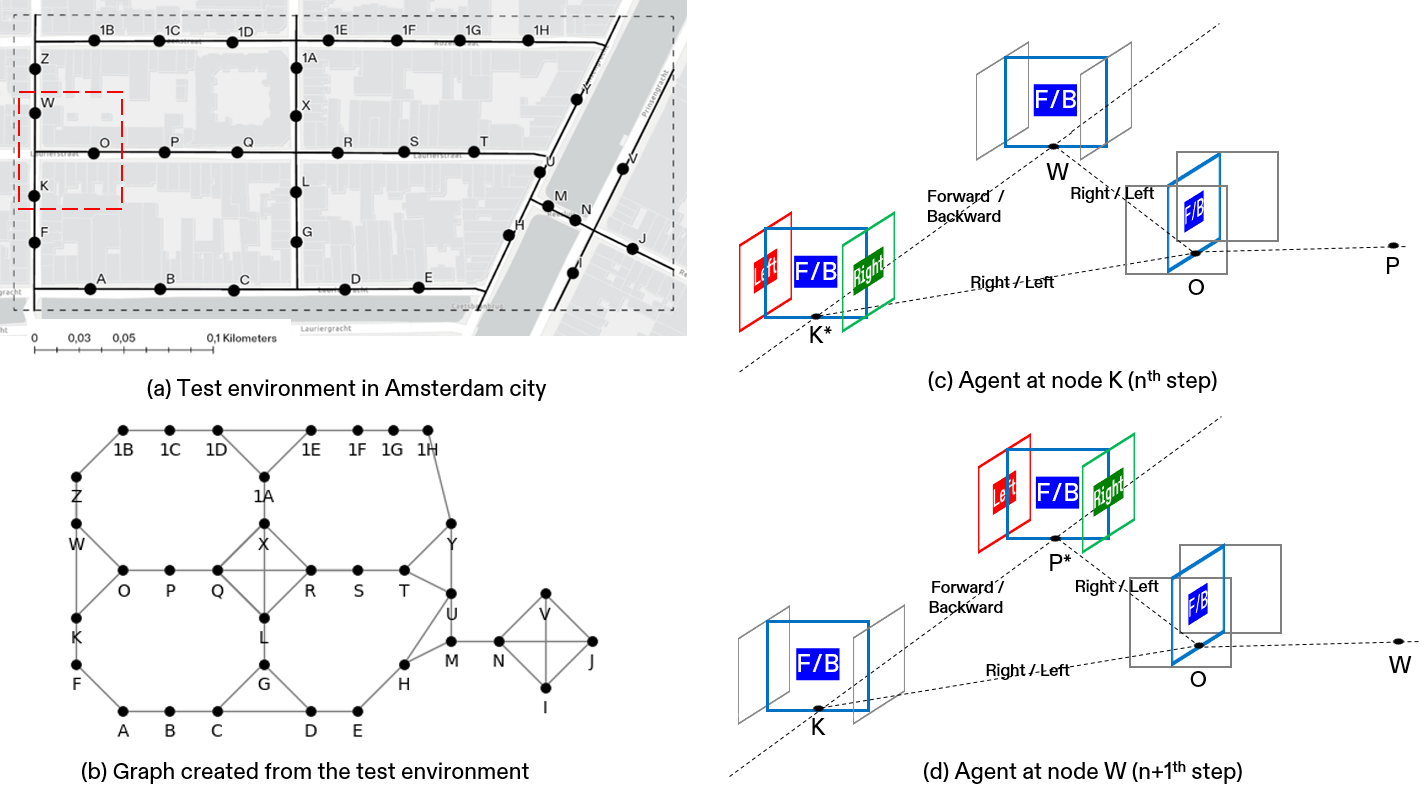This study employs LLMs to simulate human behavior in two tasks: assessing generative agents' effectiveness in processing visual information and movement for navigating urban representations. A generative agent framework with visual, movement, and memory modules is designed to observe visual stimuli. The agents, each with distinct personalities, locate a 'restaurant' using stored memories. The study also evaluates perceptual attributes, safety, and liveliness of scenes using Google Street View imagery and vision models, with chatgpt-3.5 as the LLM..
- An OpenAI API access through API key. The framework can be run with Open LLMs as well, however the prompts need to change and results might differ widely.
- A Google Street View API key to fetch street view images.
- The code was run on Windows 11 with no specific requirements other than Pytorch which is required for several visual foundational models.
- A environment file
langchain_environment.ymlis supplied with the addtional inormation on versions of libraries in which the code was run.
The study initiates with the construction of a bi-directional graph, utilizing GSV API-based URLs as node attributes and incorporating directional information (right/left/forward/backward) as edge data. The code implementation is provided in topo_graph.ipynb.
The agent framework is created, integrating LangChain boilerplate code and memory modules inspired by the work of Park, Joon Sung, et al.. The framework encompasses prompts, logic, and memory components. The generative_agent.py script establishes the overall structure, while memory.py is responsible for creating the memory module. The lang.ipynb notebook provides a working structure of the developed agent framework.
Foundational models dedicated to tasks like Segmentation, Classification, and Object Detection are employed. The relevant files are stored in image_description/. Agents utilize the constructed graph to retrieve images, and the visual inference models decode the information embedded within these images.
Navigating through these fundamental components, GenAI agents play a crucial role in the study's exploration and analysis. The interlinking of these modules help emulate human visual and movement behavior in the limited data provided.

The 15-step runs by the agent to find the tree-house in the city.

The liveliness ratings provided by the agents for specific locations.

An excerpt of the agents' preferences regarding decision of movement between two locations.
I would like to express my gratitude to the creators and contributors of the following libraries, whose invaluable tools significantly contributed to the success of this project:
-
generative_agents and the associated study was significant part of this work.
-
langchain provided boilerplate code necessary for the creation of overall framework.
I am deeply appreciative of the open-source community and the developers behind these libraries for their dedication and the exceptional work they have done. Their contributions have enriched this project and made it possible to achieve its goals efficiently.
The associated manuscript with this work is currently being peer-reviewed.

